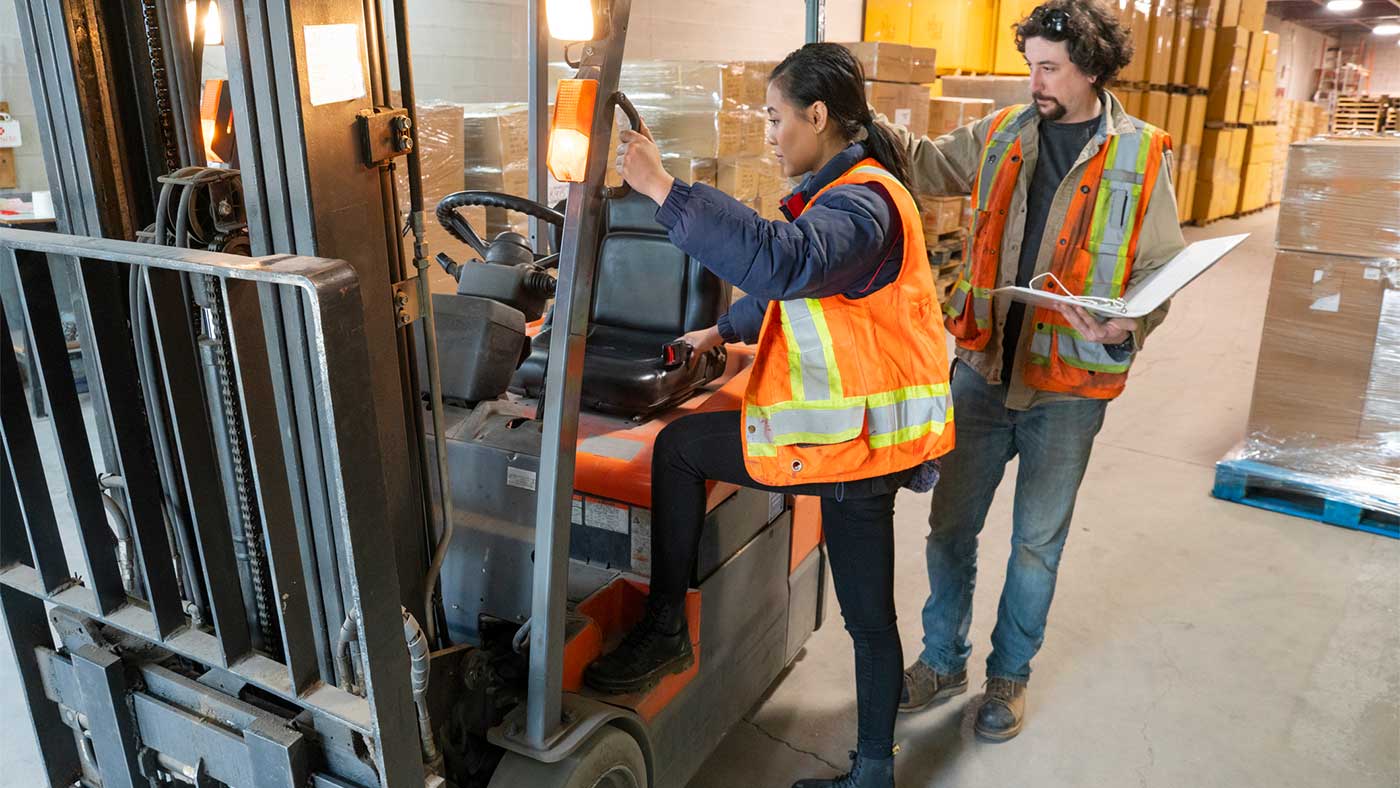Work health and safety (WHS) inductions for new and young workers
Did you know new employees in the manufacturing industry run a greater risk of workplace injury than people with experience on the job?

Research shows this is due to the simple fact that they are less familiar with their surroundings.
You as an employer, can minimise the risk to all your workers – new and more experienced – by prioritising WHS training as part of their induction programs.
Why inductions are important in reducing risk of injury in the manufacturing industry
It's important that all new workers are given a comprehensive induction to your workplace, so they understand how to do their job safely. Without this, there's a heightened risk of injury and liability, which is not good for any business.
It takes new workers time to familiarise themselves with different processes and procedures, learn how to use equipment, and safely move around the workplace.
It's important for employers to support new workers as they learn on the job – this includes providing adequate inductions to prevent them from being injured.
How to provide an induction
The best way to provide an induction to new and young workers in the manufacturing industry is in person at the workplace so you can:
- point out hazards and how they are controlled
- demonstrate the safety features of equipment such as guarding and emergency stops
- answer individuals' questions about safety
- point out safety signage and the reasons for it
- show where other written information such as safe work instructions are located
- introduce new workers to first aid officers and other key safety people.
What to cover in an induction?
When you are introducing new workers to your workplace, it's important to include WHS information such as:
- everybody's rights to a safe workplace
- responsibilities to work safely at all times
- how to report accidents and injuries
- how to identity and report workplace hazards, and
- safe work procedures to follow.
Your workers need safety information and an induction to the worksite before they start their job – not after.
It is a good idea to use a checklist to make inductions easier and more thorough. Be sure to keep completed checklists on file as a record of employee training.
Topics you should consider including on your WHS induction checklist include:
- hazards and risks in your workplace
- how to use special equipment, and any additional training that's required
- safe work practices
- WHS legislation
- emergency procedures:
- emergency exits
- evacuation instructions and assembly points
- fire extinguishers, fire alarms and other fire safety equipment (show locations and demonstrate how they are used)
- first aid and emergency contacts
- introductions to your safety officers, health and safety representatives and people in your workplace who hold first aid qualifications, and
- any other important WHS information for people to stay safe in your workplace.
Training isn't just about delivering information – it's about making sure your workers understand why the information is relevant and how it will help them. While you are providing the induction, ask questions and make sure people understand what you are saying.

Risk to young workers
Young workers are more likely to be injured at work, especially if they are new to the job. Insurers accepted more than 13,000 serious workers compensation claims from young workers in 2015–16. Fourteen workers aged between 14 and 24 were killed in the same year. When young people start off in the workplace, they:- have limited work experience
- are less aware of WHS risks and responsibilities
- may be overconfident in their capabilities
- may not be able to make mature decisions about how to work safely
- may not know how to protect themselves from injury, both physical and psychological
- might need guidance about creating a safe workplace for others
- may be overly keen to please and make a good impression, and
- may be reluctant to ask questions, make requests or raise problems.
Induction for young workers
Young workers may need extra support to help them do their job safely.When training young workers, tell them about these five steps to take before starting a task:
- Stop if you see a risk or hazard
- Ask yourself 'is it safe?'
- Could it hurt someone?
- Speak up
- Ask.
Employers can create safe and healthy environments for all workers, including young people, by:
- providing tools, training and supervision to do work safely
- educating them about their WHS rights and responsibilities
- creating a safe, positive workplace culture where people feel confident to speak up and ask questions about health and safety.
At the end of the day, employers and supervisors have the greatest influence on young worker's attitudes and approach to WHS. Therefore, as an employer, you are responsible for ensuring your workers understand the role WHS plays in creating a safe working environment for everyone.

